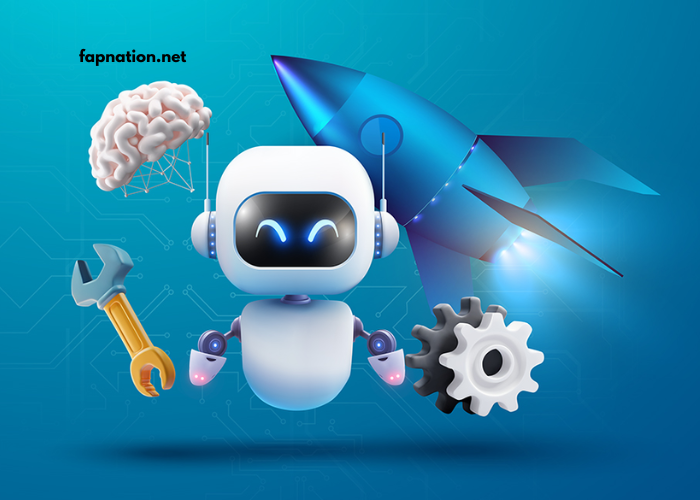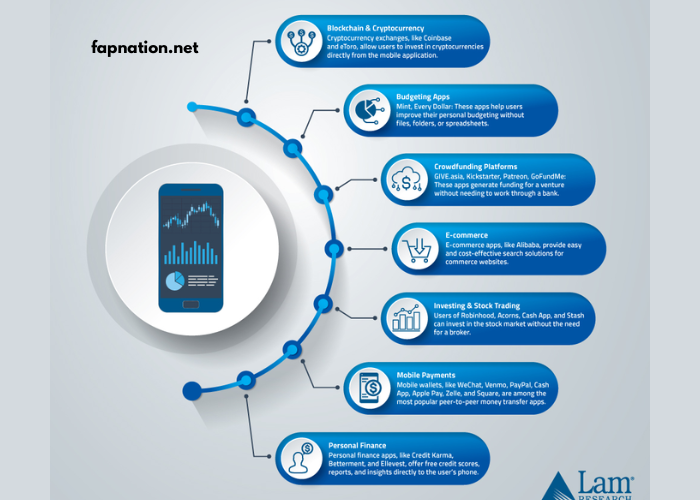The intersection of artificial intelligence (AI) and automation has sparked a revolution across industries, transforming the way we live, work, and interact with technology. AI and automation are no longer concepts confined to science fiction; they have become an integral part of our daily lives. From healthcare and finance to manufacturing and entertainment, these technologies are reshaping the global landscape.
This article delves into the impact of AI and automation on technology, analyzing their role in innovation, efficiency, job markets, and ethical considerations. By understanding these influences, we can better prepare for the future and leverage these advancements responsibly.
The Rise of Artificial Intelligence (AI)
Defining Artificial Intelligence
Artificial intelligence refers to the simulation of human intelligence in machines designed to perform tasks that traditionally require human cognition. These tasks include decision-making, problem-solving, speech recognition, visual perception, and language translation, among others. AI systems are typically categorized into narrow AI, which is designed to perform specific tasks, and general AI, which aims to exhibit human-like cognitive abilities across a variety of activities.
In recent years, advancements in machine learning, deep learning, and natural language processing have propelled AI technology forward, leading to increased adoption across various sectors. AI’s ability to process large amounts of data quickly and accurately is one of the primary drivers behind its widespread use.
Applications of AI Across Industries
AI has a far-reaching impact across numerous industries. Below are some key areas where AI is revolutionizing technology:
Healthcare
AI in healthcare is transforming diagnostics, treatment planning, and patient care. Machine learning algorithms are being used to analyze medical images, predict disease progression, and personalize treatment plans. AI-powered chatbots and virtual assistants also help healthcare providers improve patient interaction and service delivery.
Finance
In the financial sector, AI is helping improve risk management, fraud detection, and algorithmic trading. AI algorithms analyze massive datasets in real-time, identifying patterns and making predictions that allow financial institutions to make informed decisions. Chatbots powered by AI are also being utilized to provide customer support and assistance.
Manufacturing
AI and automation are drastically changing manufacturing processes. Robotic systems equipped with AI can handle complex tasks like assembling products, performing quality checks, and managing inventory. AI in manufacturing leads to greater efficiency, precision, and reduced production costs.
Customer Service
AI-powered chatbots and virtual assistants are widely used in customer service applications. These systems can manage customer inquiries, provide 24/7 support, and handle routine tasks, freeing up human agents to focus on more complex issues. The implementation of AI has significantly improved customer satisfaction and operational efficiency.
Automation: Redefining Processes
What Is Automation?
Automation refers to the use of technology to perform tasks without human intervention. Automation can be applied in a wide range of areas, from industrial processes to office tasks. In combination with AI, automation is now capable of handling not just repetitive manual tasks but also more cognitive and decision-making functions.
Types of Automation
Automation can be categorized into several types:
Fixed (Hard) Automation
This type of automation is used in high-volume production settings, where machines are set up to perform repetitive tasks consistently. Examples include assembly line robots in car manufacturing and conveyor belts in production plants.
Programmable (Soft) Automation
Programmable automation is used for producing products in batches or for systems that need to be adjusted or reprogrammed for different tasks. Robotics and CNC machines are common examples of programmable automation.
Cognitive Automation
Cognitive automation involves AI systems that can learn and adapt to different scenarios. This includes tasks such as data analysis, decision-making, and pattern recognition, making it more versatile than traditional automation.
How Automation Is Impacting Industries
Automation, when paired with AI, is enabling unprecedented levels of productivity and efficiency across multiple industries:
Manufacturing and Logistics
Automation is transforming manufacturing by improving precision and reducing labor costs. Robots in factories are now capable of assembling products, packaging goods, and performing quality control. In logistics, automated systems and drones are used for inventory management and delivery, reducing the need for human labor and increasing delivery speeds.
Agriculture
Automation is making its way into agriculture, with AI-driven systems that optimize irrigation, planting, and harvesting. Autonomous tractors and drones monitor crop health, analyze soil conditions, and make real-time adjustments to improve yields. These advances allow farmers to operate more efficiently and sustainably.
Transportation and Delivery
Autonomous vehicles are becoming a reality, with companies like Tesla and Waymo making significant progress in self-driving technology. AI-driven logistics and delivery services are also reshaping the way goods are transported, improving delivery speed and reducing human error.
The Role of AI and Automation in Technology Innovation
Accelerating Technological Advancements
The synergy between AI and automation is accelerating technological innovation in ways that were previously unimaginable. The ability to process vast amounts of data, make real-time decisions, and learn from past experiences allows AI-driven systems to improve and evolve autonomously. This cycle of continuous improvement results in increasingly sophisticated technologies that drive further progress in a variety of fields.
For instance, AI is playing a critical role in advancing robotics and machine learning algorithms. These technologies are being applied to develop smarter robots capable of performing tasks in environments previously thought to be too complex for automation. As AI and automation become more intertwined, they will continue to push the boundaries of what is possible in technology.
Enhanced Decision-Making and Efficiency
Automation powered by AI is significantly improving decision-making and operational efficiency. In fields such as healthcare, finance, and logistics, AI systems can process enormous volumes of data to extract actionable insights, making real-time, data-driven decisions. This enhanced decision-making capability not only optimizes operations but also improves outcomes in various industries, from patient care to financial planning.
Impact on Jobs and Employment
Job Displacement Concerns
One of the most debated topics regarding AI and automation is their impact on the job market. While these technologies offer significant productivity gains, they also raise concerns about potential job displacement. Automation has already replaced many manual labor jobs, particularly in manufacturing and low-skill positions. AI is expected to have a similar effect on more cognitive roles, such as customer service, legal research, and accounting.
However, it’s essential to recognize that while certain jobs may be displaced, AI and automation also create new job opportunities. These technologies require skilled workers in areas such as data analysis, AI development, and robotics engineering. The rise of these technologies demands a shift in the workforce, with an emphasis on retraining and upskilling employees.
The Role of Reskilling and Upskilling
To mitigate the adverse effects of AI and automation on employment, it is crucial to invest in reskilling and upskilling initiatives. Workers need to adapt to the changing job landscape by learning new skills, particularly in areas such as AI programming, robotics maintenance, and data analysis. Governments, businesses, and educational institutions all have a role to play in ensuring that the workforce is equipped to thrive in an increasingly automated world.
Ethical Considerations in AI and Automation
Bias and Fairness in AI
One of the significant ethical concerns surrounding AI is the potential for bias. AI systems are trained on vast datasets, and if these datasets contain biased information, the AI system can inadvertently perpetuate these biases. For example, an AI used in hiring could inadvertently favor certain demographic groups over others based on historical hiring patterns.
It is crucial for developers to implement measures to ensure that AI systems are designed to be fair and unbiased. Transparency in AI algorithms and accountability for the decisions made by these systems are essential to build trust and prevent discrimination.
Privacy and Data Security
AI and automation technologies often rely on vast amounts of personal data to function effectively. The collection, storage, and analysis of this data raise significant concerns about privacy and data security. Ensuring that AI systems are designed with robust data protection measures is essential to prevent breaches and protect user privacy.
Governments and organizations must work together to establish guidelines and regulations that govern the use of personal data in AI and automation, ensuring that users’ rights are safeguarded.
The Future of AI and Automation
The future of AI and automation holds immense promise. As these technologies continue to evolve, we can expect them to become more integrated into our daily lives, providing more personalized experiences and improving efficiency across all sectors. However, the rapid pace of development also presents challenges in terms of regulation, ethics, and social impact.
To harness the full potential of AI and automation, collaboration between governments, industries, and academia is essential. By addressing concerns related to job displacement, data privacy, and ethical considerations, we can ensure that these technologies benefit society as a whole.
Conclusion
The impact of AI and automation on technology is profound, driving innovation and transforming industries across the globe. While these technologies offer numerous benefits, including increased efficiency, cost savings, and improved decision-making, they also present challenges, particularly in terms of job displacement and ethical concerns.
As AI and automation continue to advance, it is crucial to balance innovation with responsible development. By addressing the potential risks and ensuring that workers are adequately prepared for the changes in the job market, we can navigate the future of technology in a way that benefits everyone. The continued evolution of AI and automation promises a future where technology works alongside humans to create a more efficient, productive, and equitable world.



